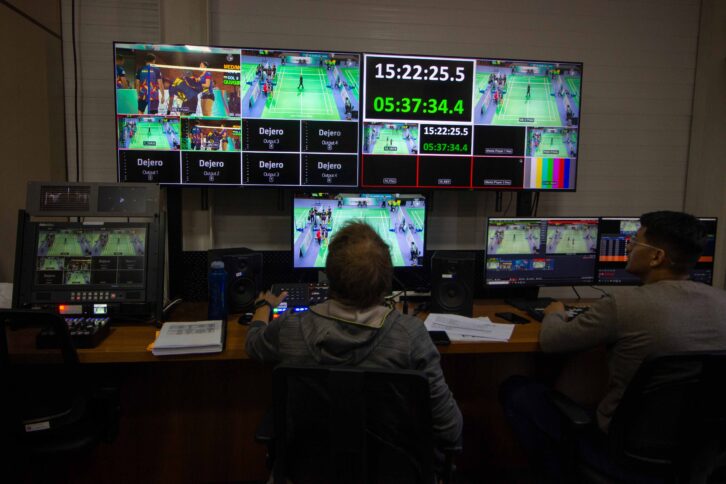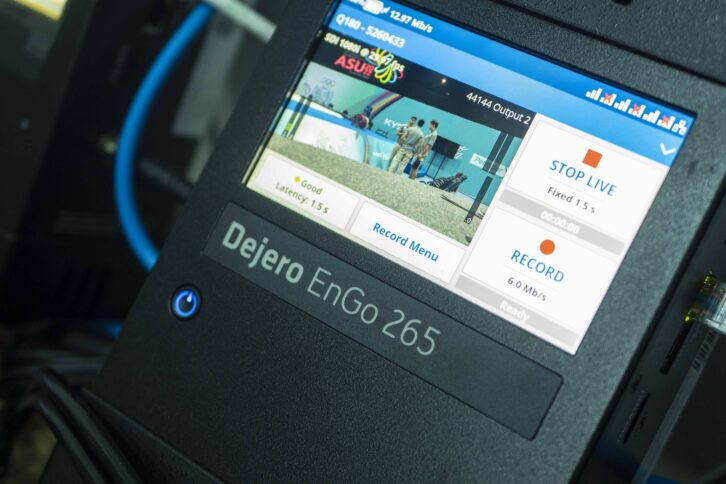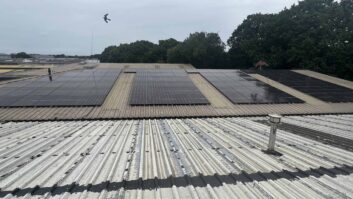The media industry has barely had time to catch its breath after Qatar, but already planning is underway for the next FIFA World Cup and this time the tournament will be taking place in three different countries.
2026 will mark the first time a World Cup is hosted in football stadiums that span an area of over 4,000 miles.
With an additional 16 teams competing compared to 2022, 48 teams will be taking part across North and Central America in a total of 104 matches, the United States is expected to host the majority of matches, including every game from the quarterfinals onward, while Canada and Mexico will each host the rest.
That raises questions about the amount of travel players and fans will have to do, since the tournament is being held in 11 cities across the United States, plus the three venues in Mexico and another two in Canada. Sustainability is a key talking point due to the number of flights needed to transport teams, fans, media and organisation officials across the three countries.
For national broadcasters, it’s imperative that they are there to report on the action – each competing nation is expecting it. But how can they do this from a logistical and budgetary perspective – and how will the event affect sustainability goals?
The host broadcaster and rights holders are likely to take up all of the fibre lines available in the venues – so other broadcasters need to find alternative ways of transmitting video and data from each location.
A few years ago, the first thought may have been to resource a fleet of Outside Broadcasting (OB) trucks – roll up to each city, line up a network dish and tap into satellite connectivity to transmit live feeds. A production crew, consisting of the director, technical director, producers, assistant producers, sound technicians, graphics operators, camera operators, engineers, etc would all need to be on site. And if there are multiple matches taking place simultaneously, resources would need to be duplicated several times.
Flying everyone across the Americas would cost hundreds of thousands of Dollars alone. Freighting OB trucks or even hiring production vehicles locally would add to the costs. And what about the logistics coordination and customs considerations for the trucks and staff to cross borders? Broadcasters would be competing with one another for satellite time and bandwidth when you arrive.
On top of all that, the tournament’s carbon footprint would be enormous.
Up until recently, remote production was considered experimental as opposed to a viable means of broadcasting. For a while, it was difficult to comprehend the expense and complexity, especially when considering the limitations of the technology a few years ago. Thankfully, things have changed and so have people’s attitudes to sustainability.
As the first to offer the Spanish market an established model of remote IP production back in 2017, international production company Quality was a true pioneer in remote production, often using video mobile transmitters and mobile apps as the primary transmission path for live sports.
“We launched Quality during the television industry’s worst financial crisis, so we had to evolve our business model to incorporate remote IP production and find a way to produce top quality remote productions without passing on the cost of a full crew and OB van to our clients,” says Pablo Reyes, CTO, Quality.
The innovative company was soon producing live football matches for LaLiga, as well as providing live feeds from the World Cup 2018 in Russia for all Spanish media.

Dejero has played a key role in their achievements with their EnGo video mobile transmitters, WayPoint receivers and CuePoint return servers with built-in Smart Blending Technology at the heart of Quality’s remote multi-camera productions, enabling uninterrupted connectivity between the stadia and their production hubs.
“Thanks to Dejero technology, all our production facilities and resources remain at our hubs, which saves us between 65-70 per cent on setup time and costs, including cable installation, production crew time, travel and other expenses, as well as overall logistics,” says Reyes.
Only last year, Quality was invited to be joint host broadcaster for the XII South American Games in Asunción, Paraguay. They made television history by successfully completing the first-ever all-remote multi-sport production, and they reported this lean remote production workflow equated to a Net Present Value savings of approximately $2.5million. But the savings aren’t just about costs and logistics, it is also about saving the planet.
“We’ve come to realise that, as a direct result of implementing IP remote productions to cover major sporting events, such as the World Cup 2026, we are helping to meet our broadcast customers’ sustainability goals,” adds Reyes.
Many of Dejero’s customers are considering a different strategy for the upcoming World Cup.
Basing one lean remote production crew in each country (USA, Canada, Mexico) or region (Western, Central, Eastern) is one idea – consisting of only one camera operator and one reporter who would capture content such as press conferences, fan interviews, cultural segments, etc and transmit live via a Dejero EnGo. Or they could hire local camera operators and reporters or use local Dejero partners, who already have EnGo video mobile transmitters and cameras in the country or region.

Dejero is developing innovative ways to support its customers during the FIFA World Cup 2026. It may set up local rental hubs and mini-IBCs (International Broadcast Centres) where broadcasters can call to hire EnGo 3 and 3x 5G video mobile transmitters with packaged connectivity plans and international roaming SIMs. That way, national and local broadcasters can transmit live camera feeds and packaged content via the EnGo to either Dejero’s local IBC or to their own production hub/s equipped with Dejero WayPoint receivers. The WayPoint reconstructs and decodes video feeds from the transmitters ready for distribution.
Another idea is for broadcasters to hire the camera operators and mobile transmitters from Dejero directly and simply have them follow their local correspondent to capture and transmit live content back to their broadcast centres.
Ultimately, this means less travel will be required, and less movement or transporting of equipment.
The Dejero EnGo 3x, next-generation 5G transmitter, provides reliable 4K UHD video transmission and multi-camera production in the field. That means one camera operator can transmit multiple camera feeds in 4K – to make for an even leaner production.
From the hay days of OB fleets in the 1970s to now, where innovators are using single mobile transmitters for live sports coverage from multiple and challenging locations, the evolution of remote production and blended IP network connectivity is pivotal in helping broadcasters reduce their carbon footprint and achieve their sustainability goals, especially at the FIFA World Cup 2026.







